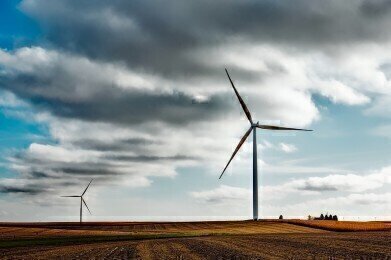Environmental laboratory
Do Wind Turbines Affect Nearby Crops?
Jan 06 2017
Variously decried as “tilting giants” by Don Quixote, “unattractive, ugly, noisy and dangerous” by President-elect Donald Trump and “eyesores” by critics all over the world, wind turbines are something of a much-maligned species. Despite the fact that wind power has long been touted as key to the future of renewable energy, it seems that the turbines have found their detractors everywhere they’ve tried to take hold.
However, new research conducted by a professor at Iowa State University suggests that as well as offering a limitless supply of clean energy, wind turbines might also be beneficial to agricultural crops in their vicinity, too.
Critics at every turn
Wind farms have suffered an uneasy relationship with the public from the day of their inception. Long hailed as a key part of energy generation in the future, they have nevertheless been impeded by planning permission difficulties across the UK and further afield.
In the first place, their opponents allege that the turbines are unattractive blights on the landscape, with Donald Trump in particular seizing upon this idea in his condemnation of Scottish plans to build a series of farms nearby his golf course.
More recently, the anti-turbine brigade have attempted to turn to medicine to justify their complaints, with the rise in popularity of the dubious disease wind turbine syndrome (WTS). Its proponents argue that those living nearby wind turbines develop an array of symptoms, from disrupted sleeping patterns to hair loss to premature aging. As yet, research into the ailment has been limited, but that which has taken place has leant absolutely no credence to the veracity of such claims.
Conducive to crop growth?
Now, a study conducted by Eugene Takle, a professor in Iowa, has suggested that far from damaging the natural life around them, wind turbines might actually be beneficial to crop growth. In his study, Takle measured the wind speed, temperature and turbulence in the air around the turbines when they were operational and when they were dormant.
He found that in general, turbines produced a cooling effect during the day and a warming one at night. In addition to this, the amount of carbon dioxide (CO2) in the atmosphere was found to rise during the periods in which the turbines were operational, while the spread of fungi and frost was also reduced.
While there are many genus of plant and tree which are suffocated by too much CO2 and wilt in cold daytime temperatures, several vital crops thrive in these conditions. In particular, it’s known that soybeans and corn, two dietary staples (and coincidentally, two of the biggest exports of Takle’s home state Iowa), perform better during warmer nights, cooler days and with increased levels of CO2.
More research needed
“On balance, it seems turbines have a small, positive impact on crops,” explained Takle in a statement. However, he was quick to point out that his results are by no means conclusive.
For example, enhanced soil quality and a higher volume of rainwater would have a far greater effect on the growth of the crops than the turbines, so it’s difficult to gauge exactly how beneficial an effect they are having. As things stand, however, the results are certainly encouraging.
Digital Edition
IET 35.2 March
April 2025
Air Monitoring - Probe Sampling in Hazardous Areas Under Extreme Conditions - New, Game-Changing Sensor for Methane Emissions - Blue Sky Thinking: a 50-year Retrospective on Technological Prog...
View all digital editions
Events
May 06 2025 Nuremberg, Germany
May 10 2025 Karachi, Pakistan
May 11 2025 Vienna, Austria
May 11 2025 Seoul, South Korea
Salon Analyse Industrielle & Instrumentation
May 14 2025 Paris, France







_(4427399123)-(2).jpg)











